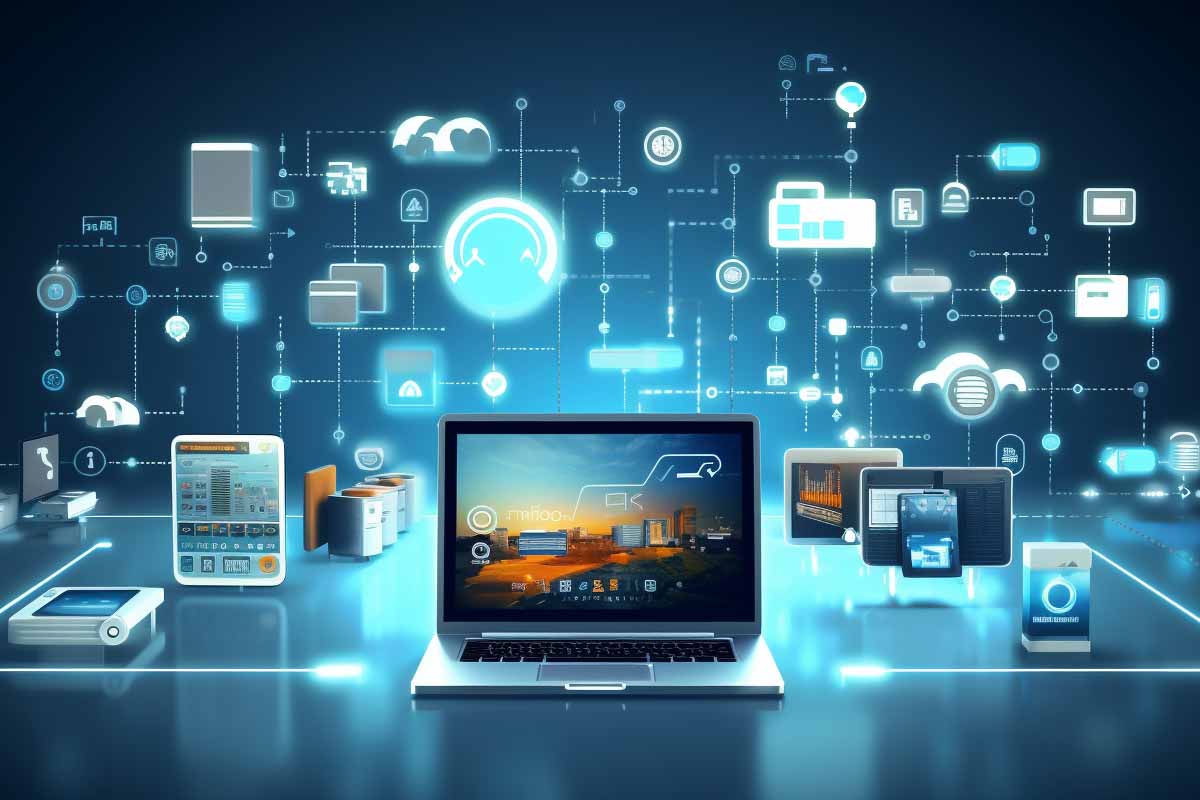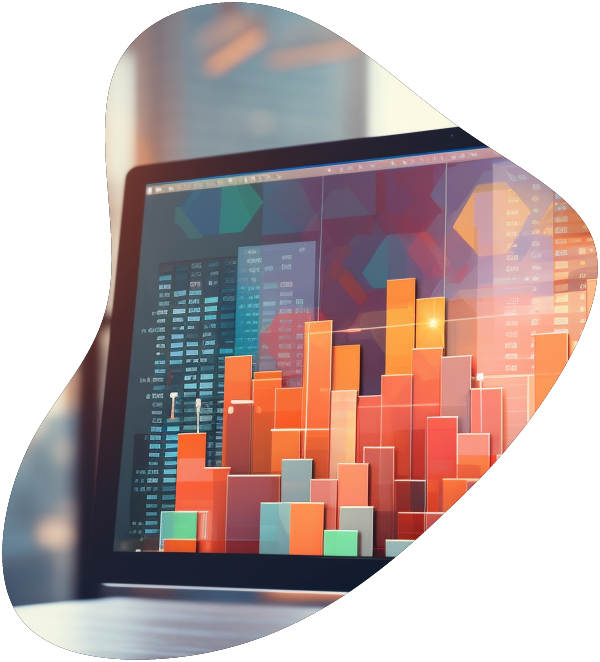What Is Accelerometer
An accelerometer is a device that measures the acceleration it experiences relative to freefall and uses this to calculate the velocity and position of the object it is attached to.

The Internet of Things (IoT) is a transformative force in today’s digital era, embedding intelligence into the fabric of our daily lives. This network of connected devices, ranging from the mundane to the sophisticated, simplifies routines, enhances operational efficiency, and conserves energy. As we explore the realms of smart home technology and urban innovation, the impact of IoT unfolds, creating environments that are more responsive, sustainable, and seamlessly integrated.
Smart thermostats are at the forefront of home automation systems, learning from household patterns to optimize heating and cooling schedules for both comfort and energy savings. These intelligent devices leverage data analytics in IoT to adapt to your lifestyle, enabling remote control via smartphones. Beyond convenience, smart thermostats play a pivotal role in energy conservation, contributing to a greener planet by reducing unnecessary energy use.
The technology behind smart thermostats includes advanced algorithms and wireless sensor networks that monitor temperature preferences, occupancy patterns, and even weather forecasts. This information allows the thermostat to automatically adjust settings to maintain optimal comfort while minimizing energy consumption.
Intelligent lighting systems introduce unparalleled convenience and energy efficiency into the home environment. These systems, integral to connected devices, allow users to control lighting via smartphone apps or voice commands, adjusting brightness and color to suit any occasion. Beyond individual user benefits, these systems contribute to overall energy efficiency by ensuring lights are only on when needed and are set to the most efficient levels.
At the heart of intelligent lighting technology are IoT sensors and connectivity options such as Zigbee, Wi-Fi, and Bluetooth Low Energy (BLE). These technologies facilitate the seamless integration of lighting systems into the broader smart home ecosystem, enabling them to interact with other devices for automated routines, such as dimming lights when a smart TV is turned on or activating outdoor lights based on sunset times.

Propel your career forward and be part of an essential member of any management team as an Information Security Manager. This advanced training series is designed specifically for those want to move up into a management position in the IT field.
The evolution of home security systems through IoT has significantly enhanced safety and peace of mind. Smart locks, cameras, and alarm systems now offer features like real-time alerts, video surveillance, and remote monitoring through mobile applications. This digital transformation has made home security more robust and accessible, allowing homeowners to easily check in on their property from anywhere in the world.
IoT in home security utilizes a combination of wireless communication technologies, encryption, and cloud storage to ensure that surveillance data is transmitted securely and stored safely. Moreover, artificial intelligence (AI) plays a crucial role in analyzing video feeds in real-time to detect unusual activity, sending instant notifications to homeowners and, if necessary, to emergency services.
Smart appliances represent a leap forward in making homes more efficient and tasks more manageable. Refrigerators that can keep track of groceries and suggest recipes, ovens that can be preheated remotely, and washing machines with optimized cycles for different fabrics are just a few examples of how IoT is reshaping the domestic landscape. These appliances not only offer convenience but also improve energy use and reduce waste, aligning with sustainability goals.
The technology underpinning smart appliances includes IoT connectivity protocols like Wi-Fi and Bluetooth for remote operation and diagnostics. Moreover, they incorporate advanced machine learning algorithms to learn from user interactions and preferences, further enhancing their efficiency and user experience.
Smart traffic management systems represent a significant advancement in urban innovation, utilizing IoT to enhance the flow of traffic and reduce congestion in cities. These systems employ sensors and cameras to monitor traffic conditions in real-time, adjusting traffic signals dynamically to optimize traffic flow and reduce waiting times at intersections. The integration of IoT in traffic management not only improves daily commutes but also contributes to lowering carbon emissions by minimizing idle times for vehicles.
The backbone of smart traffic management technology is the extensive use of data analytics and wireless sensor networks. These networks collect data from various sources, including vehicles and traffic signals, to create a comprehensive understanding of urban traffic patterns. Advanced algorithms then analyze this data to make real-time adjustments to traffic light timings and to provide drivers with recommendations for the fastest routes, significantly improving the overall efficiency of urban transportation systems.
IoT has transformed waste management in urban environments by introducing smart bins and waste collection systems. These systems optimize garbage collection routes and schedules based on real-time data from sensors embedded in waste containers, which monitor fill levels and signal when collection is needed. This approach not only makes waste collection more efficient but also reduces operational costs and environmental impact by avoiding unnecessary pickups and ensuring trucks are fully loaded before making trips.
The technology behind smart waste management involves IoT sensors for monitoring waste levels, GPS for tracking collection vehicles, and data analytics platforms for optimizing routes and schedules. By leveraging these technologies, cities can enhance the cleanliness of urban spaces, reduce fuel consumption of waste collection vehicles, and improve the overall sustainability of waste management practices.
IoT plays a crucial role in monitoring water quality in urban areas, providing authorities and citizens with real-time information on the safety of their drinking water. Sensors deployed in water supply networks detect contaminants and changes in water quality, alerting officials to potential issues before they become health hazards. This proactive approach to water management ensures that any problems can be addressed swiftly, maintaining the safety and trust in urban water supplies.
The deployment of IoT in water quality monitoring involves a network of physical sensors, communication networks, and cloud-based analytics platforms. These components work together to continuously assess water quality parameters such as pH levels, turbidity, and the presence of harmful microorganisms. Real-time data processing enables immediate action when water quality standards are not met, safeguarding public health and the environment.
Smart grid technology is a cornerstone of IoT applications in urban environments, facilitating the efficient distribution and use of electricity. By incorporating IoT devices throughout the power grid, utilities can monitor energy consumption in real-time, identify inefficiencies, and automatically adjust supply based on demand. This not only enhances the reliability of the electrical supply but also encourages energy conservation and the integration of renewable energy sources.
The technology behind smart grids includes advanced metering infrastructure (AMI), which allows for two-way communication between utilities and consumers. This enables dynamic pricing models, where electricity prices can vary based on demand, encouraging users to reduce consumption during peak hours. Additionally, IoT sensors within the grid help detect and isolate outages quickly, minimizing downtime and improving service reliability.
The integration of IoT in urban environments is paving the way for smarter, more sustainable cities. From improving traffic flow and waste management to ensuring the safety of drinking water and the efficiency of energy use, IoT technologies offer practical solutions to many of the challenges faced by urban areas. As we continue to innovate and integrate these technologies into our urban infrastructures, the potential for creating more livable, efficient, and environmentally friendly cities becomes increasingly achievable. The future of urban living, powered by IoT, promises a world where technology and connectivity drive progress and enhance the quality of life for all.

Your career in information technology last for years. Technology changes rapidly. An ITU Online IT Training subscription offers you flexible and affordable IT training. With our IT training at your fingertips, your career opportunities are never ending as you grow your skills.
Plus, start today and get 30 days for only $1.00 with no obligation. Cancel anytime.
As the Internet of Things (IoT) weaves itself more deeply into the fabric of our daily lives and urban infrastructures, the importance of security within this interconnected ecosystem cannot be overstated. IoT security encompasses the measures and technologies designed to protect connected devices and networks from unauthorized access, misuse, and cyber threats. With the proliferation of smart devices in homes and cities, ensuring the integrity and confidentiality of data and the reliability of device operations has become paramount.
The diverse and ubiquitous nature of IoT devices introduces unique security challenges. Many devices are built with limited processing power and memory, which can restrict the implementation of traditional cybersecurity measures. Furthermore, the heterogeneity of IoT devices and protocols complicates the task of standardizing security measures. Additionally, many IoT devices collect sensitive personal and operational data, making them attractive targets for cyberattacks that could lead to data breaches, identity theft, and even physical harm.
1. Device Authentication and Access Control: Implementing strong authentication mechanisms ensures that only authorized devices and users can access the network. Techniques such as digital certificates, two-factor authentication, and biometric verification play critical roles in securing IoT ecosystems.
2. Data Encryption: Encrypting data both at rest and in transit protects it from interception and unauthorized access. Utilizing robust encryption standards and protocols is essential for maintaining the confidentiality and integrity of data.
3. Regular Software Updates and Patch Management: Manufacturers must provide regular firmware and software updates to address vulnerabilities and enhance security features. Users should also be encouraged to apply these updates promptly to protect against exploits.
4. Network Security: Employing firewalls, intrusion detection systems (IDS), and intrusion prevention systems (IPS) can help monitor and control network traffic based on predetermined security rules, thereby preventing unauthorized access and attacks.
5. Privacy Measures: Adopting privacy-by-design principles, where privacy considerations are integrated into the development process of IoT devices and applications, helps in minimizing data collection and storage to what’s strictly necessary, enhancing user privacy.
The development and adoption of international standards and regulations for IoT security are critical for establishing a safe and reliable IoT environment. Organizations such as the Internet Engineering Task Force (IETF) and the National Institute of Standards and Technology (NIST) have been working on frameworks and guidelines to address IoT security challenges. Compliance with these standards and regulations not only improves security but also builds consumer trust in IoT technologies.
Securing the IoT landscape is a collective responsibility that requires the collaboration of manufacturers, software developers, service providers, and users. By implementing comprehensive security measures and staying informed about the latest security trends and threats, stakeholders can contribute to creating a safer IoT ecosystem. As IoT continues to evolve, fostering a culture of security and privacy will be crucial in unlocking its full potential and ensuring its sustainable growth in both home and urban environments.
You may also like:
TCP Ports : How They Work and Why They Matter
SSH Port Forward : Use Cases and Practical Applications
Bus Topology : Understanding the Basics and Benefits
How to Secure Your Home Wireless Network for Teleworking: A Step-by-Step Guide
IoT technology is increasingly embedded in everyday life, with common uses including smart home devices like thermostats and lighting systems, wearable health monitors, connected appliances, and smart security systems. In urban environments, IoT applications extend to smart traffic management, waste management systems, water quality monitoring, and smart grid technology for energy distribution.
IoT devices communicate through the internet using various wireless protocols such as Wi-Fi, Bluetooth, Zigbee, and cellular networks. These protocols enable devices to exchange data and instructions with each other and with central systems or applications, allowing for remote monitoring, control, and automation of tasks and processes.
The main security risks include unauthorized access to personal and operational data, hijacking of devices for malicious purposes (e.g., to launch DDoS attacks), vulnerabilities due to outdated firmware or software, and the potential for privacy breaches. The diversity and quantity of IoT devices also create challenges in standardizing security measures and managing network access controls.
Protecting IoT devices involves several key strategies: regularly updating device firmware and software to patch vulnerabilities, using strong, unique passwords for device accounts and Wi-Fi networks, enabling two-factor authentication where available, and employing network security measures such as firewalls and secure Wi-Fi networks. Additionally, consider disabling unnecessary features that could expose the device to risks and be cautious about the personal information shared with IoT devices.
Yes, there are several standards and regulations aimed at improving IoT security. These include guidelines and frameworks developed by organizations such as the National Institute of Standards and Technology (NIST) in the United States, the Internet Engineering Task Force (IETF), and the European Union’s General Data Protection Regulation (GDPR) which addresses privacy and security of personal data within IoT devices. Compliance with these standards and regulations helps in enhancing the security and reliability of IoT systems.
Lorem ipsum dolor sit amet, consectetur adipiscing elit. Ut elit tellus, luctus nec ullamcorper mattis, pulvinar dapibus leo.
$49.99 Original price was: $49.99.$16.99Current price is: $16.99. / month with a 10-day free trial
An accelerometer is a device that measures the acceleration it experiences relative to freefall and uses this to calculate the velocity and position of the object it is attached to.
Acoustic Cryptanalysis is a fascinating and complex field that lies at the intersection of cryptography, acoustics, and cybersecurity. It involves the analysis of sound waves generated by electronic devices, particularly
Adaptive Learning Systems are sophisticated educational technologies designed to customize the learning experience to meet the unique needs of each student. By analyzing a student’s performance in real-time, these systems
Address Space refers to the range of memory addresses that a system or a process can use. It plays a crucial role in computer architecture, operating systems, and networking, where
The Advanced Encryption Standard (AES), also known as Rijndael encryption, stands as a cornerstone in the field of data security. This symmetric encryption algorithm secures sensitive information, ensuring that data
Agile estimating and planning is a flexible and dynamic project management approach that focuses on delivering high-value features in short iterations. This methodology emphasizes collaboration, customer feedback, and small, measurable
Agile retrospectives are a crucial component of the Agile software development methodology, serving as a reflective meeting that occurs at the end of each sprint. It’s a dedicated time for
Agile Value Stream Mapping (VSM) is a lean-management method for analyzing the current state and designing a future state for the series of events that take a product or service
AJAX, short for Asynchronous JavaScript and XML, is a set of web development techniques using many web technologies on the client side to create asynchronous web applications. By decoupling the
Algorithmic efficiency is a fundamental concept in computer science that concerns how well an algorithm performs in terms of time and space requirements. The efficiency of an algorithm is often
Ambient User Experience (UX) refers to the seamless integration of technology into our daily lives in a way that feels natural and unobtrusive. This concept extends beyond traditional interfaces, encompassing
A blacklist is a list or register of entities denied a particular privilege, service, mobility, access, or recognition. In the context of information technology, blacklists are commonly used to restrict,
ENDING THIS WEEKEND: Train for LIFE at our lowest price. Buy once and never have to pay for IT Training Again.